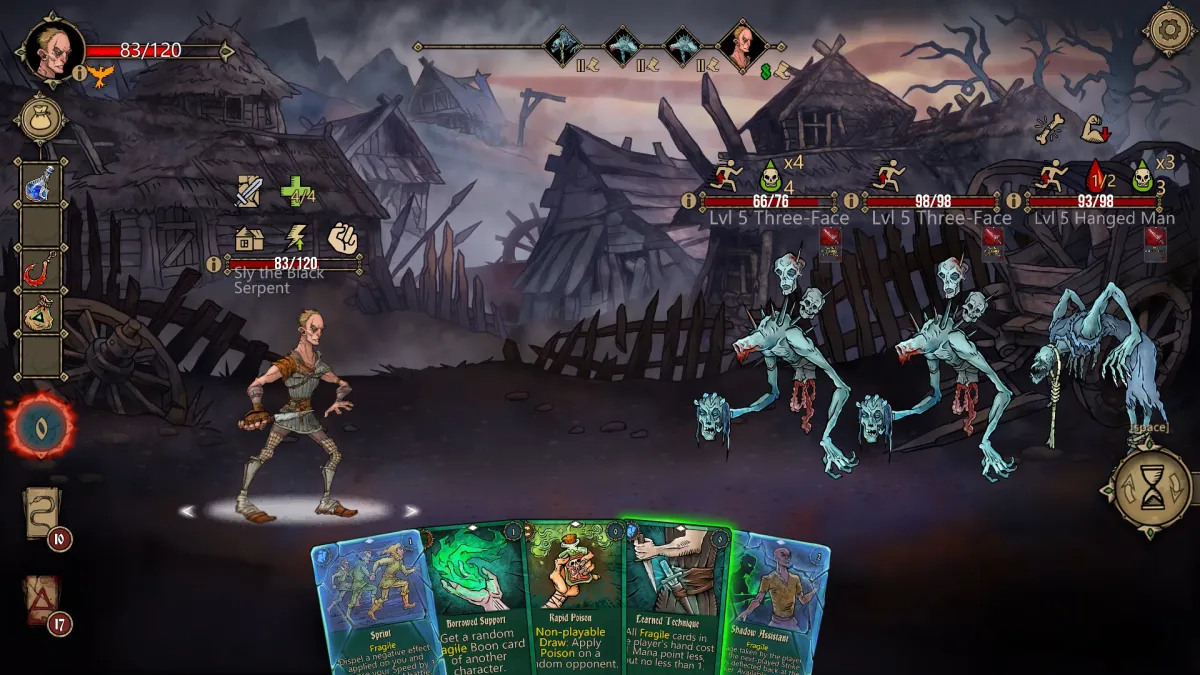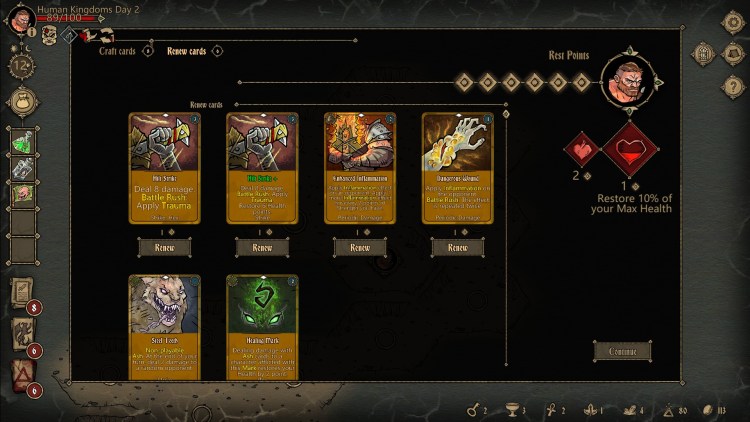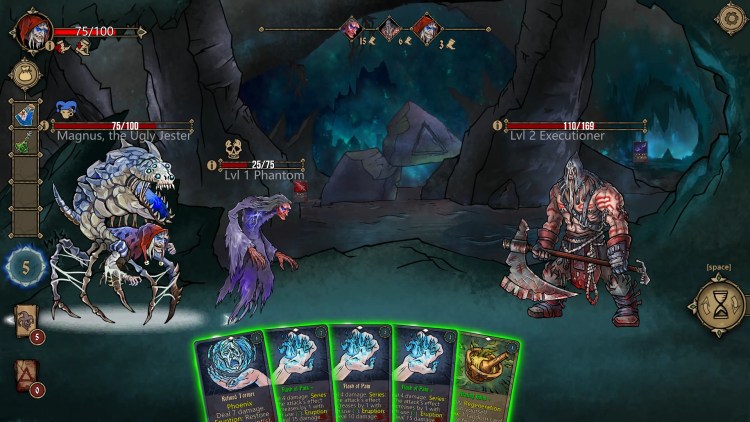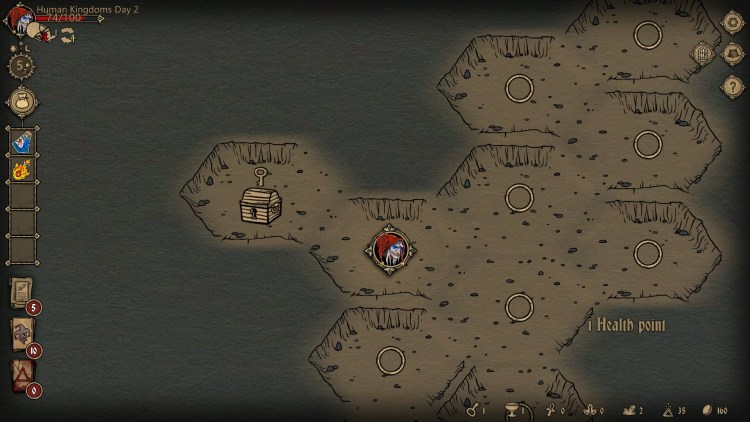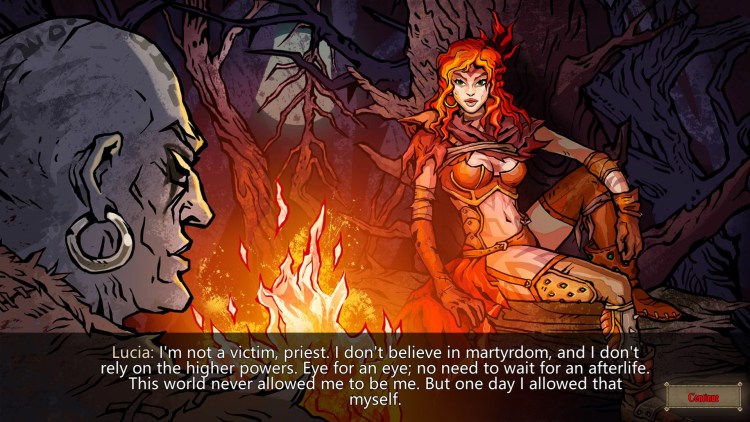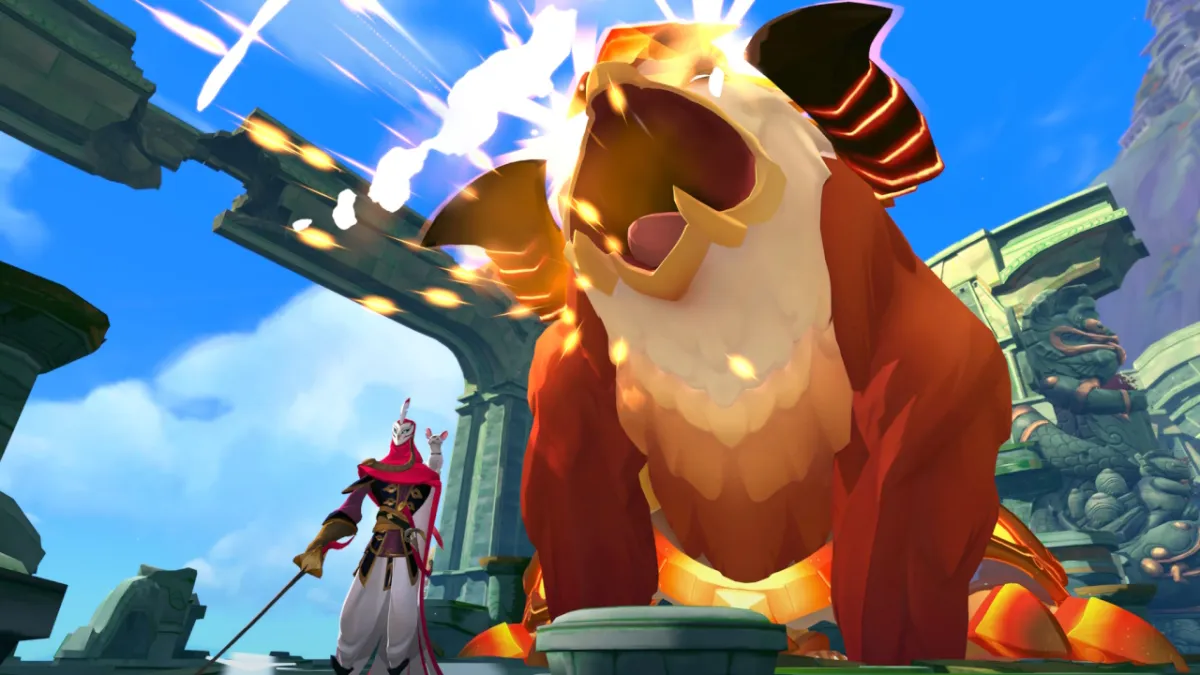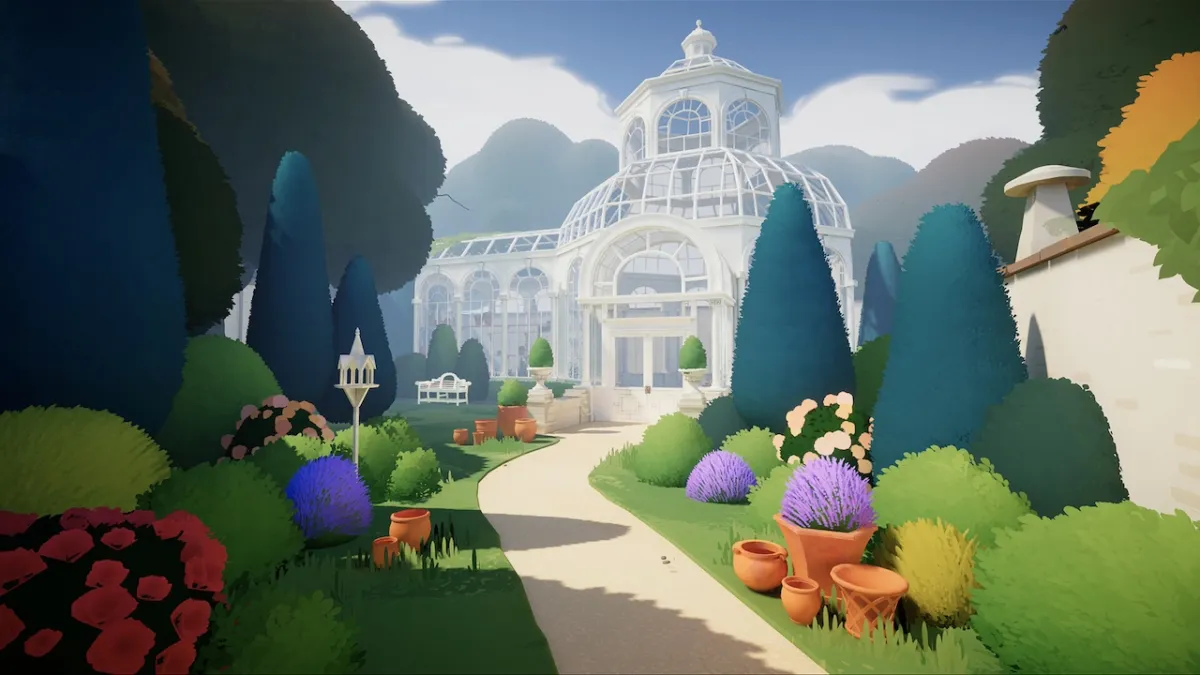Card-driven tactics games are sure coming out in droves these these days, aren’t they? The dark fantasy Deck of Ashes is but the latest of the contenders to throw his hat into the ring.
The word is sick. It was only mildly ill with human sin before, but now, the Ash Curse has been unleashed on everything. This is the consequence of the Outcasts – a infamous group of four bandits and murderers – seeking out Lady Death and the power contained in the Ash Box. Unfortunately, the Box broke as the Outcasts started fighting over it among themselves. They went their separate ways afterwards, tortured both by their pasts and the power coursing through them. But the mysterious Ash Priest seeks them out one by one to offer a solution: kill Lady Death.
And then – profit!
So Deck of Ashes technically has four campaigns, one for each character. They’re all quite similar: root around a node-map getting into battles and collecting loot until the timer runs out and you’re faced with the boss of the area. Do this three times and you’re off to off Lady Death herself. Hey, it’s like Slay the Spire, but with wandering around the map instead of relentless climb to the top!
The main difference between the campaigns comes from the character you choose. All Outcasts have their own stories – as well powers and a deck of cards they use to battle (some neutral cards also exist). For example, Lucia the Eternal Flame is a fire wizard, offering some of the most impressive outright combat power, doling out Burn effects, and having the most cards that are cast with HP rather than Mana. Former leader of the group and present rogue archetype Sly the Dark Serpent is good with Bleed and Poison effects as well creating temporary cards (even from the decks of other characters), and so on.
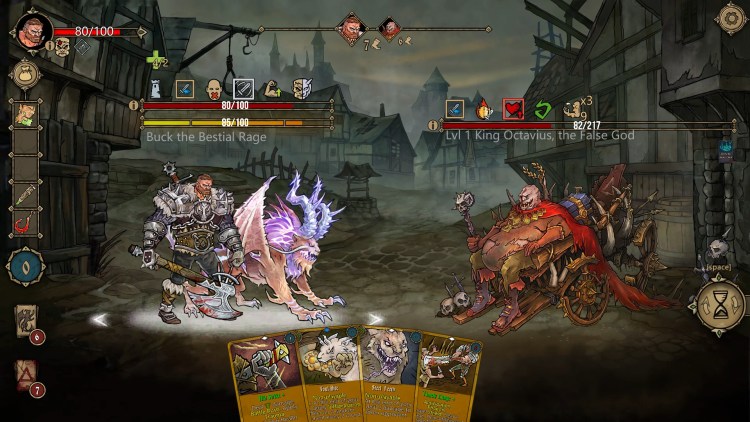
The game also features unlockable alternate skins for characters to spice up your next playthrough. Not for the cat, tho: he just grows with your rage level.
The basics of combat remain the same between the four campaigns of Deck of Ashes. Your character has their HP, a slight to dodge or cause criticals, strenght (increases attack power), and five points of mana per turn to cast their cards. Your hand is usually drawn till you have six cards, but various affects can give you more. The most interesting bit here is that played cards go to the Deck of Ashes (gameplay element as title drop!). The default way to refresh them is to wait till your Battle Deck runs low enough that you can’t draw up to 6 – then you get the option to trade HP for cards.
…except for Little Kuribo
Of course, various enemy, character, and card effects interact with this system. The Eternal Flame can power quite a few cards by discarding the hand or by having more cards in the Deck of Ashes. Some cards only work while they’re in the Deck. Various foes also discard or even renew cards for you. This isn’t always a great thing – some cards are better off discarded.
Those are known as “Ash” cards. But many of the cards in Deck of Ashes have various keywords and modifiers that make them more special than just having a straightforward result. “Phoenix” cards are great, as they return to your Battle Deck upon use. “Non-playable” usually goes on cards that do an effect when drawn (some of them are actually bad stuff like diseases). There’s also another system of keywords that describes the type of the card. This is important for some special effects, like “Shield” trait blocking damage from the next “Strike” card.
And after the battle, you pitch a tent, which gives you rest points that can be exchanged for healing and/or card restoration. And yes, it’s more economical to pay HP to get some cards back than to do it after the battle.
But any loot your collect in battle or by exploring the map nodes would be nothing without your camp. Located at the center of the map, this where you trade resources, craft new cards, and heal in Deck of Ashes. The blacksmith uses Ash to craft cards from recipes, and can use the same resource to upgrade cards with a variety of effects (this only works for the starting cards). The biggest use of Ash Master is to renew your deck for free, to burn some cards outside combat, and to get the Phoenix Ritual so that dying in battle wouldn’t spell the end of the campaign. The merchant and healer are more much prosaic in their functions – and a lot less important.
Each of your camp followers can also be upgraded by their specific resources that you can find in the wilds. It’s important to increase your post-battle rest time as soon as possible – if not for cards, then for HP restoration.
By decked by a Deck of Ashes
But enough about friends – let’s talk about the enemies in Deck of Ashes. They have stats just your character, and they can use a variety of abilities like healing others on death or deflecting every third Strike card back at you. You’ll always see the next card they’re going to use, so you can react accordingly.
The enemies range from various disgusting beasts to humans to undead and demons. Again, each set of enemies can have typical traits. For example, beasts are likely to call in more beasts, while sea critters can lay eggs that will hatch after a few turns, and so on.
And this is probably the first area where I can start complaining about Deck of Ashes. The battles last far too long for the variety of enemies and cards that exist in the game. Pretty soon, you’ll master each character’s MO and just start slaughtering low level foes. It’s almost automatic: stack the damage effect you have the access to (Burn, Bleed, and/or Poison), and most enemies will go down quite easily. Notable exceptions are the ones that manipulate your deck or have some annoying traits, but the rest are not much more than HP bars that need to be depleted.
Thus, combat in Deck of Ashes mostly about spamming your good cards until the enemy drops. And if you built your deck right, you’ll end a battle without any health loss, and having restored most of the cards used. This becomes real tedious, real fast.
But what’s even more boring is the game map. None of the loot ever feels exciting, as only various potions are something you can use immediately. New cards? Have to be constructed back at the base. Events? They’re repetitive and dull, lacking in any sort of flavor even when they’re not just “hey, one member of your camp offers one of their services outside the camp.” Finish the campaign with one character, and you’ll use the next one to mill around the map killing the most difficult enemies and mining out resources to run down the damn timer faster.
Not like the bosses are that hard. Single enemies in Deck of Ashes are a lot less dangerous than several lesser enemies than can hit you with three attacks before its your turn again.
The Art of Card
So gameplay has somewhat solid foundations made boring by balance. What about the visuals? Well, they’re generally good. The art in Deck of Ashes is of decent quality, stylized and grim. The enemy designs are vibrant if not always groundbreaking. Even the battlefield backgrounds have some dynamics to them. Loading screens and cutscenes may be still and of wildly different styles (seriously, loading screens are very much different from dark stylized art everywhere else in the game), but they’re good.
But the node map is boring, and the font choice doesn’t match anything else at all Even worse: the taunts that level bosses belch out while you run around the map as well as Ash Masters advice to seek out Ash Storm anomalies are both repetitive and immersion braking. And only part of that is bad writing.
Writing is even more important to Deck of Ashes, since the game features a great degree of voicing. You characters drop quips at the start of battle and when killing enemies – and both get old fast, especially with how many battles you’re going through. The voice acting in cutscenes is of variable quality. It’s good that the devs bothered to get voice actors that seem to be native English speakers, but they can have their failings as well (the merchant guy… just the merchant guy…).
Deck of Ashes would be a mildly interesting game if it wasn’t that boring. The battles last too long and the node map is terrible. It doesn’t help that map events are both repetitive and boring. As it is now, it’s mostly a waste of decent visuals.

